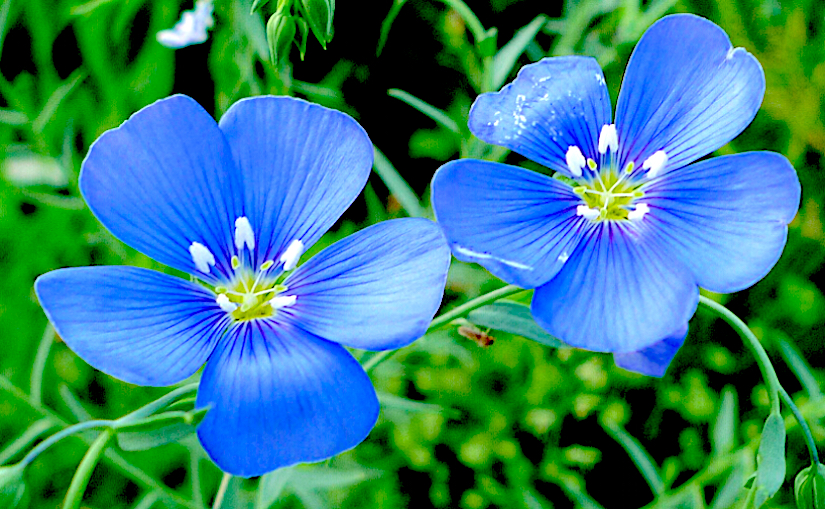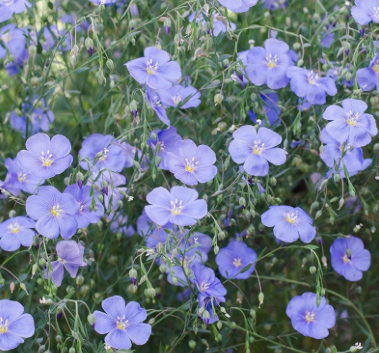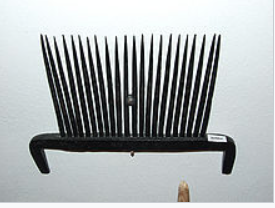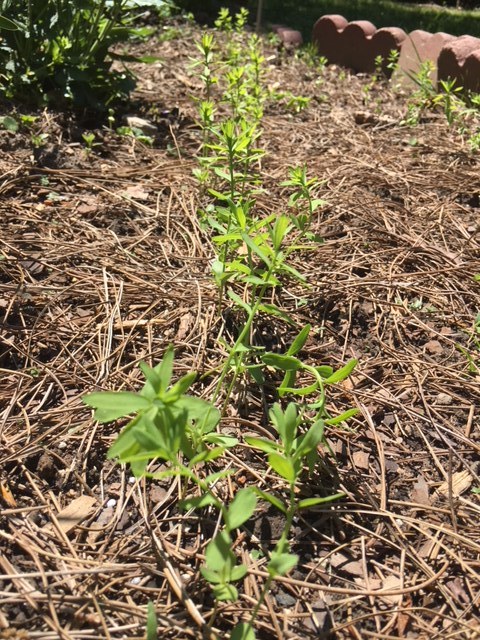So, I had this idea. I really want to create a piece of cloth from start to finish, from planting a seed to weaving the cloth. I already have the loom, so really all I need is a field of some kind of fiber, a spinning wheel and a few instructions of how to get from a seed to a handkerchief. Seems reasonable to me!

The first step was determining what kind of fiber to grow. I decided on flax, to make linen. A little research quickly confirmed that the Eurasian species, Linum usitatissimum was the correct choice. Wow, what a plant and well named because “usitatissimum” means “most useful” – and is fun to say! Not only is this plant very attractive with its blue flowers, but it has been used for both food and fiber for tens of thousands of years. Excavations from a cave in the Fertile Crescent showed flax fibers that had been spun, dyed and knotted, dating back 30,000 years.
Wild blue flax, Linum perenne, is native to the western United States and blooms profusely from Alaska to Southern California and east to Kansas. Native Americans used it to make rope and cords, though were not thought to have used it in weaving.

Common flax was extensively cultivated in ancient Egypt. Spun and woven into linen, it was used to make sails for ships and to wrap mummies for burial. Flax became an important crop in both Europe and China about 5,000 years ago. During the Middle Ages, the region of Flanders became the center of the linen industry in Europe. Flax was also brought to North America by the colonists, who developed a thriving linen industry which lasted until early in the 20th century when cotton cloth quickly replaced the more expensive linen.
Flax is supposedly easy to grow from seed so I ordered 100 seeds (I’m not trying to start an industry I just want to “grow” a handkerchief) and planted them in a sunny spot. So far so good. They are up and growing. I’ve babied them, making sure they stay moist but abundant rainfall has helped too. I can’t wait! I go out first thing every morning to check on my little seedlings.

the long, silky fibers from the stem.
In between watching my seedlings grow, though, I’ve done a little more research about how you actually make yarn or thread from flax stalks. It’s umm, humbling. and okay, a little intimidating. There are several steps including retting, breaking, scutching, hackling, spinning and weaving. And all that is possible only if the seeds grow, thrive, bloom and turn into nice, straight stalks. I have a long way to go.

Wish me luck. I’ll let you know how this project progresses, even if the grandkids stampede the seedlings in their Easter egg hunt enthusiasm. Really, it’s not the handkerchief I’m after. It’s the joy of looking at something such as a seed and envisioning all the things that it can become. I see a handkerchief. You probably see something different. I don’t think it really matters what you envision as long as you can see fun, promise or beauty in something as small as a seed.

This is such a great idea! I hope your stalks are perfectly straight for the picking and harvesting!!